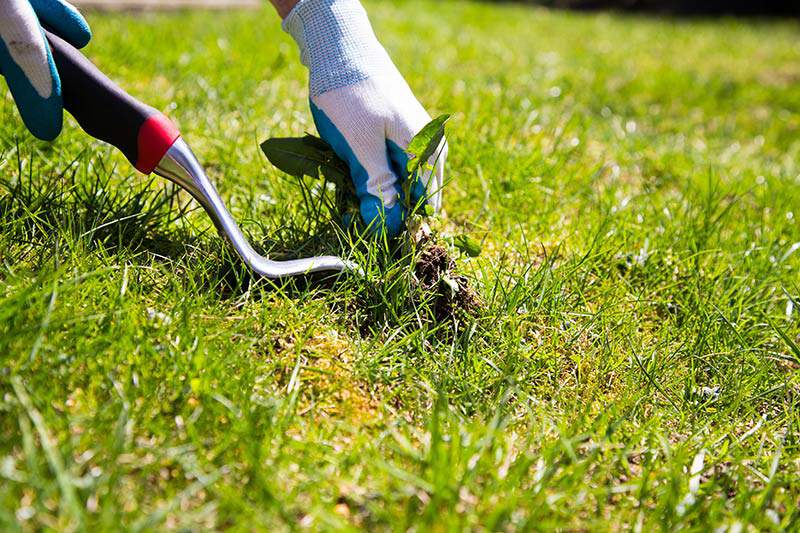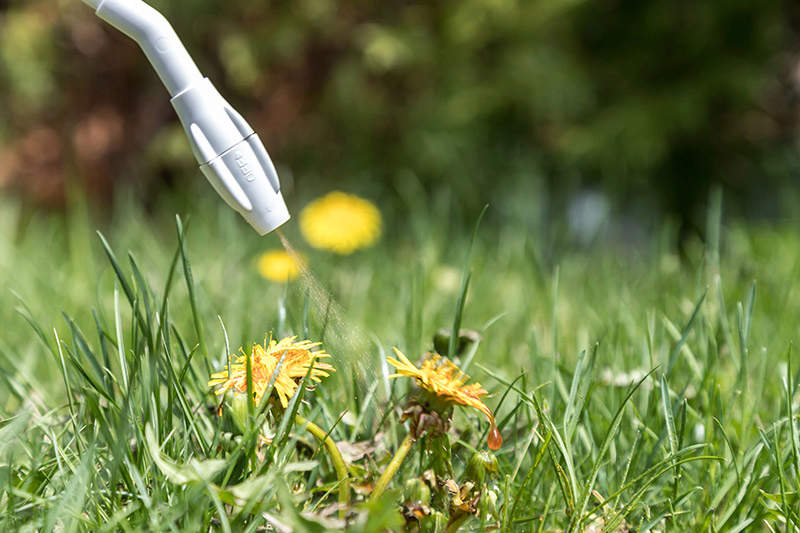How to Kill Broadleaf Weeds
Persistent broadleaf weeds, such as plantain and dandelions, transform lush, smooth lawns into coarse, uneven turf. "Weed & feed" lawn products provide a simple, effective way to rid your lawn of broadleaf weeds – and fertilize your grass at the same time. By understanding weed & feed basics, you can put an end to broadleaf weeds and promote dense, vigorous, weed-resistant turf.
- Understanding How Weed & Feed Products Work
- Selecting the Best Weed & Feed for Your Lawn
- Timing and Applying Weed & Feed Products
Understanding How Weed & Feed Products Work
Lawn and garden products known as "weed & feeds" get their name from two main components: herbicides that kill existing lawn weeds and fertilizers that feed lawn grass. Unlike crabgrass preventers, which contain "pre-emergent" herbicides that work against germinating weed seeds, most weed & feed products contain "post-emergent" herbicides, which focus on weeds that are actively growing in established lawns.
Weed & feeds vary in the common lawn weeds they target and the herbicides and plant nutrients they include, so it's important to read your product label thoroughly. Common weed & feed products generally rely on "selective" herbicides that target specific broadleaf weeds, so lawn grasses stay unharmed. Some weed & feed products are most effective on weed parts above ground. Others kill top growth and roots, so weeds can't spring back and repopulate your turf.

Selecting the Best Weed & Feed for Your Lawn
When choosing the best weed & feed product for your lawn, keep two considerations in mind: your lawn's grass type and the weeds you want to kill. Always make sure the product label lists your specific grass, such as Kentucky bluegrass or Bermudagrass, and your targeted weed types.
Pennington UltraGreen Weed & Feed 30-0-4 starts working on contact to kill more than 250 weeds down to the root, while supplying your lawn with nutrients for quick greening and extended feeding that lasts up to three months. This premium weed & feed product suits common northern grasses and most southern grass varieties, too.
For southern lawns, Pennington UltraGreen Southern Weed & Feed 34-0-4 provides quick greening and extended feeding, plus it kills and controls new lawn weeds for up to three months. Both these weed & feed products include the same high-quality nutrients that help make Pennington UltraGreen products the best lawn fertilizers for your lawn.
Some weed & feed herbicides can injure specific varieties of grasses, especially centipede and St. Augustine grasses, so it's important to understand where your product can be used. Pennington UltraGreen Southern Weed & Feed 34-0-4, formulated specifically for these grass types, controls more than 44 broadleaf and grassy weeds in centipede and St. Augustine lawns. Plus, it prevents crabgrass, paspalum and spotted spurge as well.

Timing and Applying Weed & Feed Products
Weed & feed products should be applied when weeds and lawns are actively growing. For best results, apply weed & feed in spring after grass begins active growth and weeds are still small. Apply again in late-summer or fall, when weeds and grasses store up winter reserves, as part of a fall fertilizer and weed-fighting plan. Never use weed & feed on dormant or overly stressed lawns; you'll feed active weeds and potentially harm grasses.
Germinating grass seed and small grass seedlings can be vulnerable to herbicides that weed & feeds include, so always follow instructions on your product label for seeding or overseeding areas. As a general rule, don't apply weed & feed until new grass gets established and you've mowed at least two to three times. If you've already treated with weed & feed, wait at least three weeks before seeding or overseeding that area.
To prep your lawn for weed & feed, mow at normal mowing height a few days ahead; then water well. Dew-covered or recently watered lawns are ideal for weed & feed treatments. Many weed & feed fertilizers include lighter peanut hulls that act as an herbicide carrier and help the product stick to weeds. Hulls stick best when weeds are moist, and that improves your results.
As with any herbicide or fertilizer application, follow label instructions for rates, re-entry times and other safety precautions to protect kids, pets and adults. If tough individual weeds persist, turn to a proven weed killer to kill them and keep them gone.

When broadleaf weeds jeopardize your lawn's health and beauty, don't wait and watch them spread. With Pennington weed & feed products, you can take of care of weeds while feeding your lawn the best in premium nutrients. Pennington is committed to providing you with the finest in lawn and garden products and timely tips to help you grow beautiful gardens and enjoy lush, weed-free lawns.
Pennington with design and Signature Series are trademarks of Pennington Seed, Inc.
UltraGreen is a registered trademark of Central Garden & Pet Company.
Sources:
1. Pedersen, Brad, and Bob Mugaas, "Weed Control In Lawns and Other Turf," University of Minnesota Extension.





